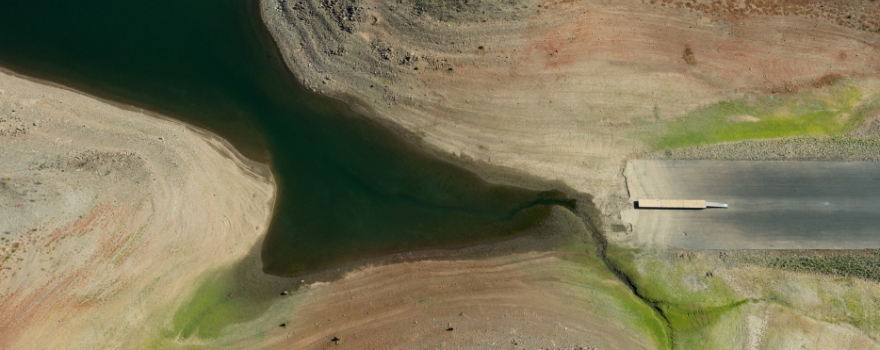 Guest commentary by Robert Shibatani:
Guest commentary by Robert Shibatani:
The phrase gets loosely thrown around by the media, general public and even by some academics and hydrological practitioners. But few, if anyone, takes the time to really explain it, to define its component parts, its various boundary conditions such as scale, timeframe, and duration. Consequently, ask any 10 people for a definition and you may just as easily find 10 different definitions.
And while diversity is often helpful, this kind of diversity is not. For something as important as our water security, having everyone on the same page is vital. And that must start with the definition of what we are confronted with and trying to solve that is agreeable to everyone. Most people understand the “concept” of scarcity; as some shortage, insufficiency, infrequency or absence. But that is where the commonality usually stops. From here, intuitive understanding can peel off in many different directions.
For example, is “scarcity” defined by incident precipitation or retained yield? Is it gross or net total water? Is it an annual determinant or is it seasonal or monthly constrained? Over what geographic area are we talking about; a State, county, administrative water district boundary or watershed? If the latter, is it a first, second or third order watershed? Can one label “scarcity” after only one year or a single season, or does it have to occur over a certain number of consecutive years running? And what is the shortage or curtailment percentage that would qualify for this tag; a 50% reduction, 75% reduction, 90% reduction? And the list goes on…
With such a wide diversity of possible definitions, the test that we apply is a simple one. It asks, “Did you at any time have access to water that you inadvertently or deliberately discarded?” We compare the discarded amount with the alleged supply shortfall; if the discarded amount is greater than the shortfall, then we deny a water scarcity label. Should the estimated shortfall exceed the discarded volume, then we concede a water scarce condition for that year only. Our criteria is based primarily on whether the best efforts were made in putting incident precipitation to beneficial use. However, if the recipient chooses to do nothing, allowing vast quantities of water to escape to rivers and ultimately the ocean, we record that no responsibility was taken by the water agency or individual to capture and/or store this available water. Nature has provided an available and accessible supply and has brought it right to one’s doorstep; if the State, water agency or individual choose not to use it, for whatever reason, then they must accept all the consequences.
In such situations, it only becomes a “water scarce” condition because you choose not to make best use of the water falling on your head. That’s not water scarcity, that’s just poor water management. Think of it this way, a person cannot claim poverty and then take their entire weekly paycheck and gamble it away. Life will be unforgiving if you do so. One must show responsibility and an effort to meet one’s obligations. The same applies to water.
As most people know, in California last year, the WY was a robust one. And because of that, most reservoirs spilled throughout the late winter and spring. Here locally, the largest CVP reservoir immediately upstream from the State Capitol is Folsom Reservoir. For the 2018-2019 WY, the reservoir “spilled” over 913,000 AF, equal to about 93% of the reservoir’s total capacity. This occurred between January and May.
Let’s put this into clear perspective, since you won’t see this in any Department of Interior public outreach brochure. The water that was discarded due to a lack of storage facilities could have been used for a host of beneficial uses; including meeting many, if not all Ag requests. The water was in your control, nature had already said, “Here you go…”. And yet the State chose not to capture and store this free bounty but rather, let it flow through the dam gates, spillways, storm sewer systems out to the Pacific Ocean. If indeed, there was a surplus, why was anyone curtailed in their contracted and requested amounts, among the federal or State contractors?
California, because of its ill-planned infrastructure, ends up with retained end-of-season carryover that is less than what is typically made available (i.e., total incident precipitation). What then ensues are curtailments in water diversions, with the unfortunate agricultural contractors first to take the hit. In my view, this remains one of the most egregious U.S. injustices in water resources management. We must do better…
About the Author: Robert Shibatani, a physical hydrologist with over 35-years combined academic, legal, consulting and water advisory expertise, is an international expert witness on reservoir-operations, climate change hydrology, commercial flood damage litigation, and water supply development. He is Managing Partner for The SHIBATANI GROUP International, a division of The SHIBATANI GROUP Inc. and resides in Sacramento, California. robert@theshibatanigroup.com
NOTE: The views of this guest commentary are those of the author’s and not necessarily Maven’s or Maven’s Notebook, et al.
 Sign up for daily email service and you’ll never miss a post!
Sign up for daily email service and you’ll never miss a post!
Sign up for daily emails and get all the Notebook’s aggregated and original water news content delivered to your email box by 9AM. Breaking news alerts, too. Sign me up!


